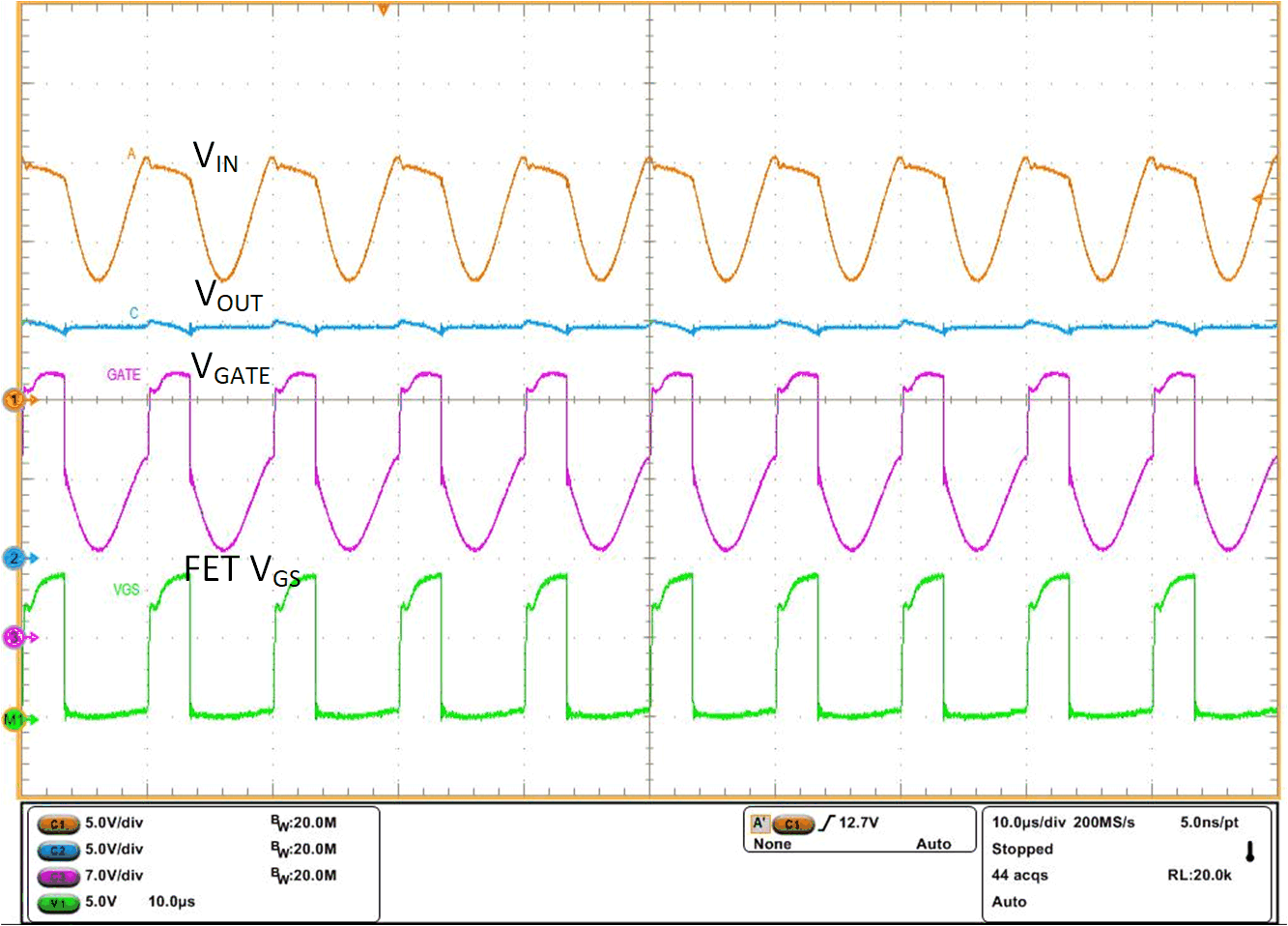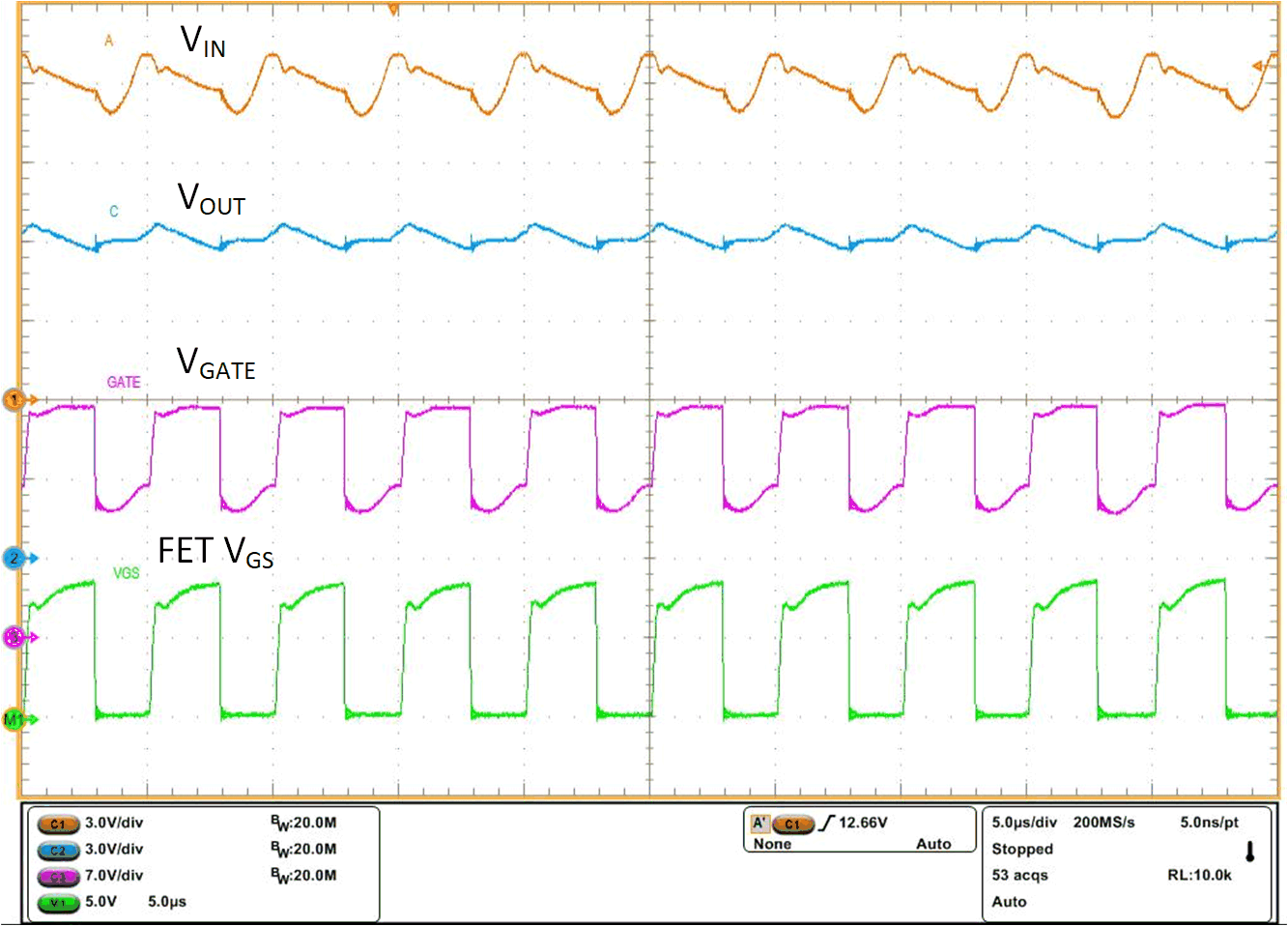ZHCSLG2B September 2021 – August 2022 LM74722-Q1
PRODUCTION DATA
- 1 特性
- 2 应用
- 3 说明
- 4 Revision History
- 5 Pin Configuration and Functions
- 6 Specifications
- 7 Parameter Measurement Information
- 8 Detailed Description
-
9 Application and Implementation
- 9.1 Application Information
- 9.2
Typical 12-V Reverse Battery Protection Application
- 9.2.1 Design Requirements for 12-V Battery Protection
- 9.2.2
Detailed Design Procedure
- 9.2.2.1 Design Considerations
- 9.2.2.2 Boost Converter Components (C2, C3, L1)
- 9.2.2.3 Input and Output Capacitance
- 9.2.2.4 Hold-Up Capacitance
- 9.2.2.5 Overvoltage Protection and Battery Monitor
- 9.2.2.6 MOSFET Selection: Blocking MOSFET Q1
- 9.2.2.7 MOSFET Selection: Load Disconnect MOSFET Q2
- 9.2.2.8 TVS Selection
- 9.2.3 Application Curves
- 9.3 What to Do and What Not to Do
- 10Power Supply Recommendations
- 11Layout
- 12Device and Documentation Support
- 13Mechanical, Packaging, and Orderable Information
9.2.1.1.2 AC Super Imposed Input Rectification: ISO 16750-2 and LV124 E-06
Alternators are used to power the automotive electrical system and charge the battery during normal run time of the vehicle. Rectified alternator output contains residual AC ripple voltage superimposed on the DC battery voltage due to various reasons. These reasons include engine speed variation, regulator duty cycle with field switching ON and OFF, and electrical load variations. On a 12-V battery supply, alternator output voltage is regulated by a voltage regulator between 14.5 V to 12.5 V by controlling the field current of alternator rotor. All electronic modules are tested for proper operation with superimposed AC ripple on the DC battery voltage. AC super imposed test specified in ISO 16750-2 and LV124 E-06 requires AC ripple of 2-V peak-peak on a 13.5-V DC battery voltage, swept from 15 Hz to 30 kHz. LM74722-Q1 rectifies the AC superimposed voltage by turning the MOSFET Q1 OFF quickly to cut off reverse current and turning the MOSFET Q1 ON quickly during forward conduction. Figure 9-3 shows active rectification of 6-V peak-peak 100-kHz AC input by LM74722-Q1. Fast turn-off and quick turn-on of the MOSFET reduces power dissipation in the MOSFET Q1, and active rectification reduces power dissipation in the output hold-up capacitor ESR by half. Figure 9-4 shows active rectification of 2-V peak-peak 200-kHz AC input.
 Figure 9-3 AC Super Imposed Test - 6-V Peak-Peak 100
kHz
Figure 9-3 AC Super Imposed Test - 6-V Peak-Peak 100
kHz Figure 9-4 AC
Super Imposed Test - 2-V Peak-Peak 200 kHz
Figure 9-4 AC
Super Imposed Test - 2-V Peak-Peak 200 kHz